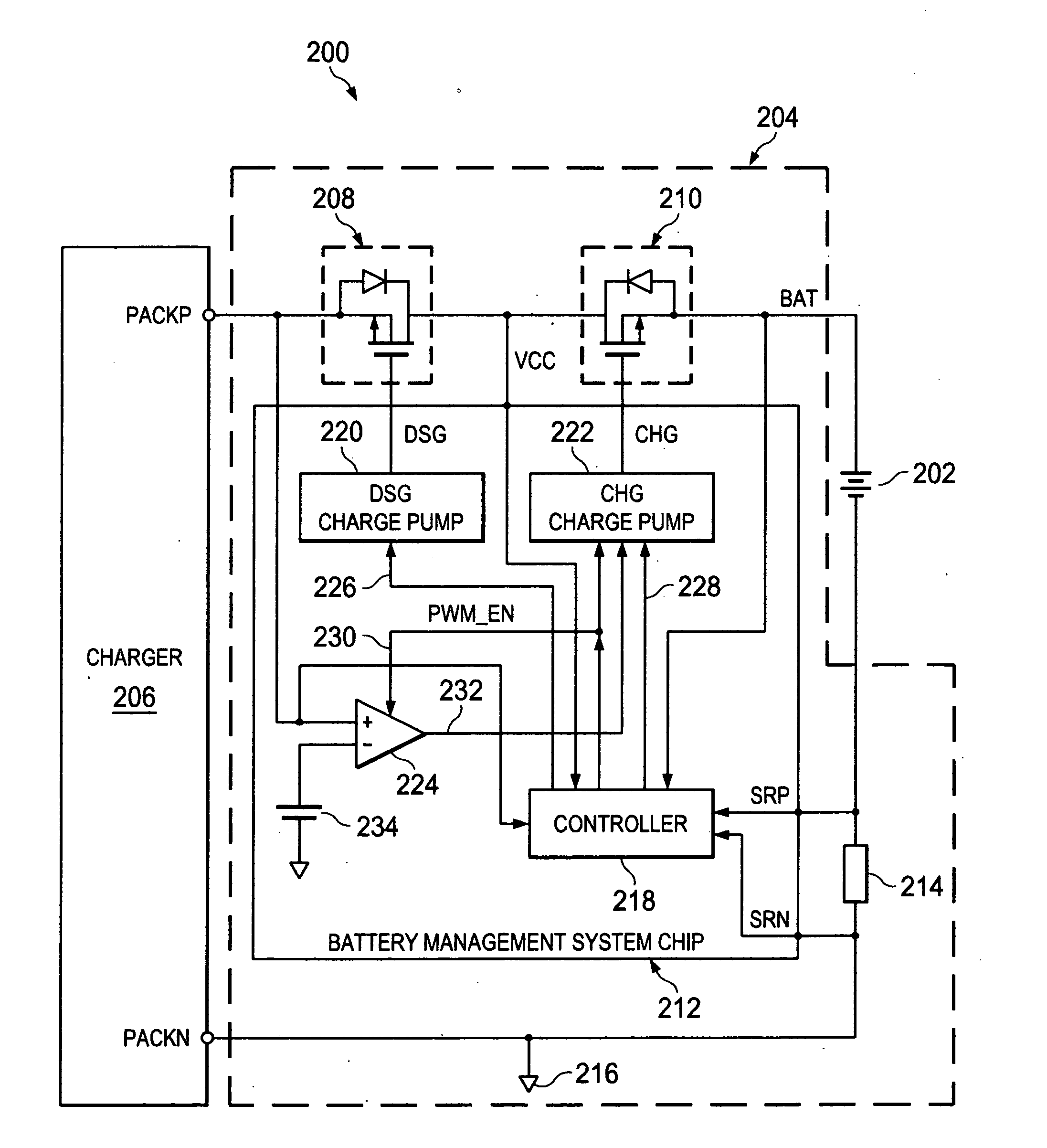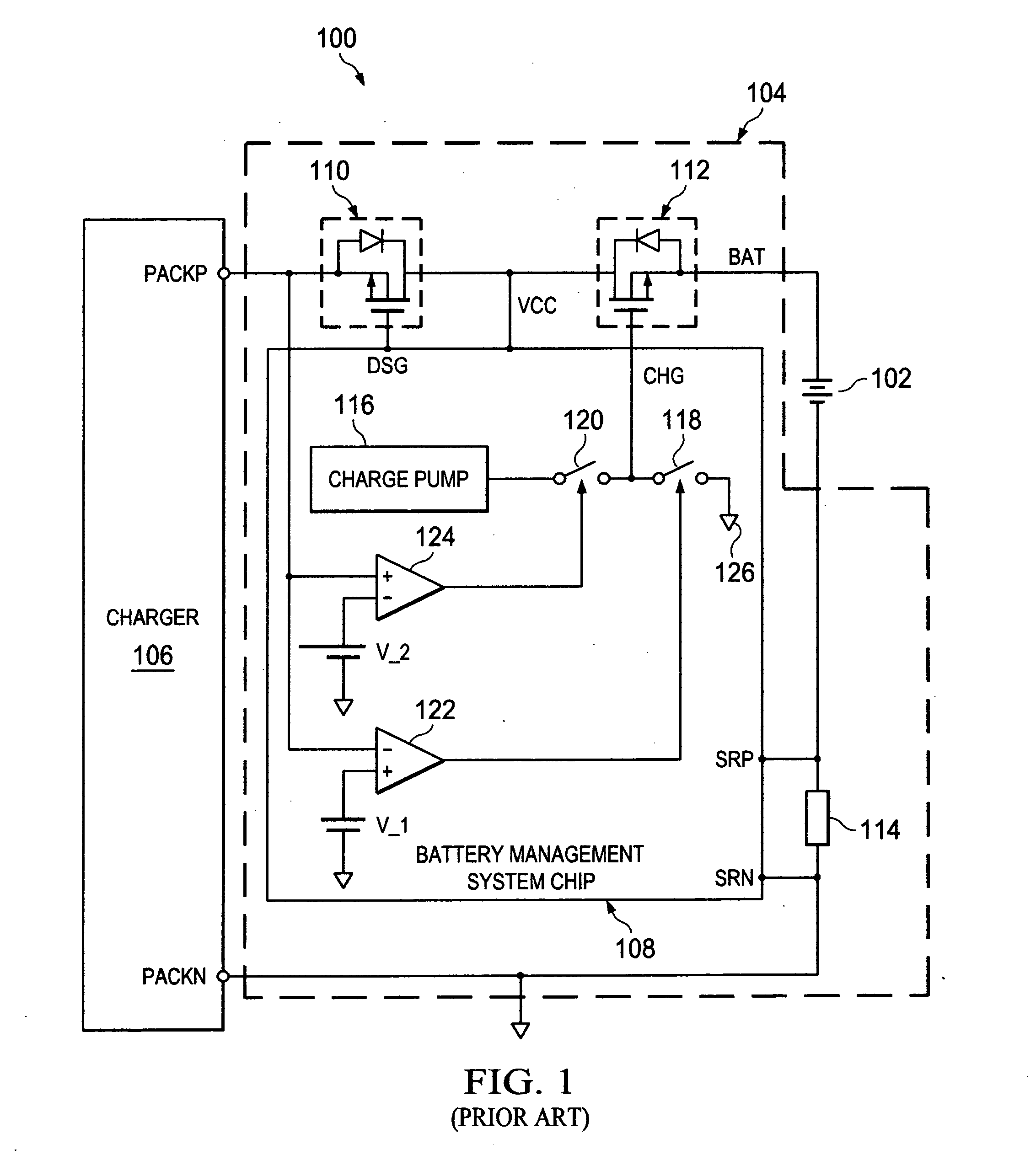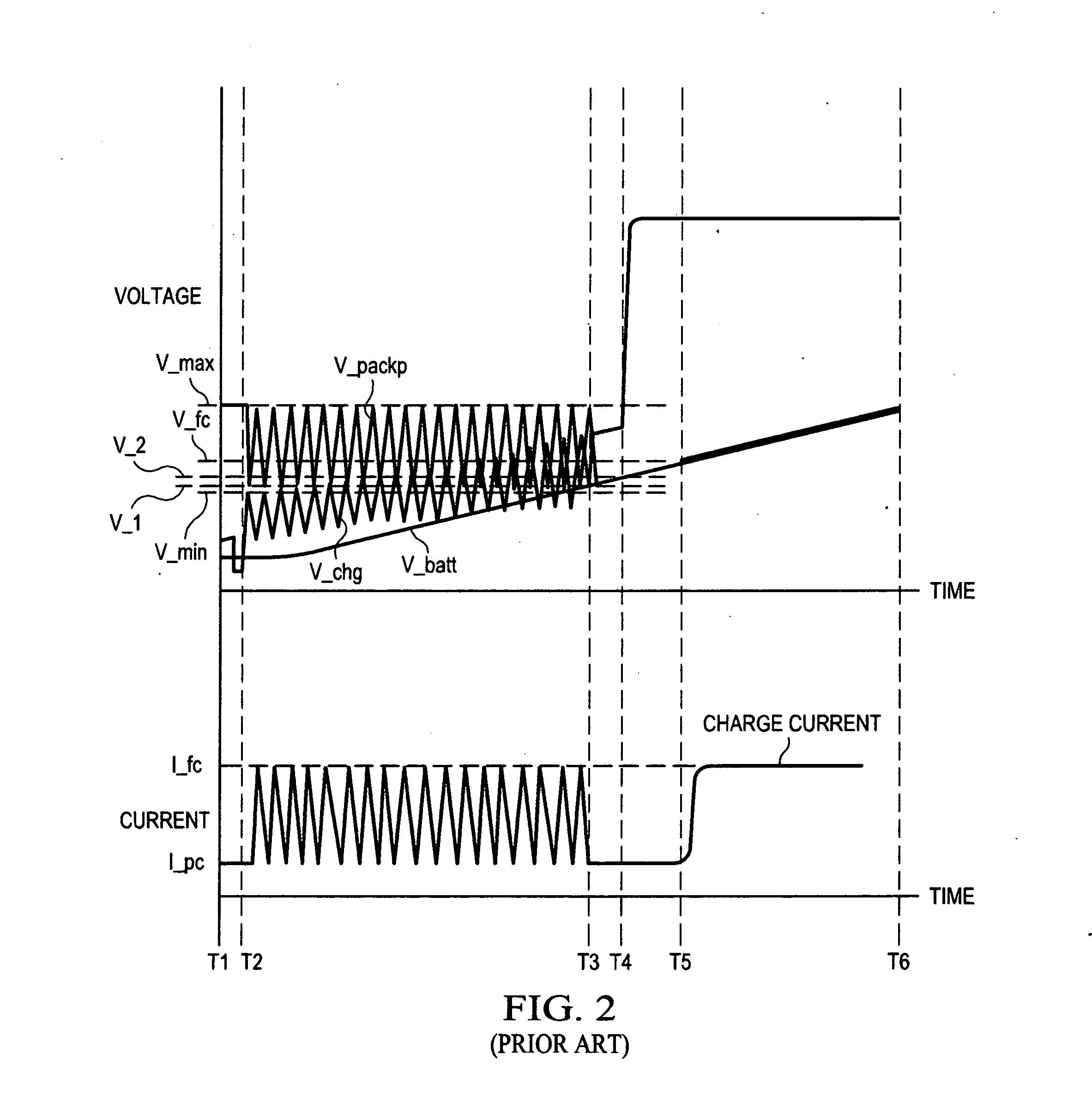Pulse width modulated battery charging
a battery charging and pulse width technology, applied in battery overcharge protection, safety/protection circuits, transportation and packaging, etc., can solve the problems of battery overheating and becoming damaged, cost and space of pre-charge transistors, resistors and other necessary components to control the pre-charge transistors,
- Summary
- Abstract
- Description
- Claims
- Application Information
AI Technical Summary
Problems solved by technology
Method used
Image
Examples
Embodiment Construction
[0022]An example electronic device 200 (e.g. cell phone, PDA, MP3 player, notebook computer, etc.) that operates with a rechargeable battery 202 (such as a Li-Ion battery) under control of a battery management system 204 (incorporating an embodiment of the present invention) between a charger 206 and the battery 202 is shown in a simplified schematic diagram in FIG. 3. The battery management system 204 generally includes a discharge FET 208, a charge FET 210, a battery management system chip 212 and a sense resistor 214. The voltage (at PACKP) from the charger 206 is applied to the battery 202 (at BAT) through the discharge FET 208 and the charge FET 210 under control of the battery management system chip 212. Unlike in the prior art described above, however, the charge FET 210 is controlled by the battery management system chip 212 to turn on and off relatively slowly during the pre-charging mode. Thus, the electrical connection between the voltage (at PACKP) from the charger 206 a...
PUM
 Login to View More
Login to View More Abstract
Description
Claims
Application Information
 Login to View More
Login to View More - R&D
- Intellectual Property
- Life Sciences
- Materials
- Tech Scout
- Unparalleled Data Quality
- Higher Quality Content
- 60% Fewer Hallucinations
Browse by: Latest US Patents, China's latest patents, Technical Efficacy Thesaurus, Application Domain, Technology Topic, Popular Technical Reports.
© 2025 PatSnap. All rights reserved.Legal|Privacy policy|Modern Slavery Act Transparency Statement|Sitemap|About US| Contact US: help@patsnap.com



